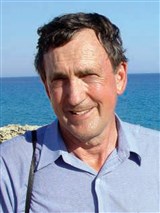 Having accrued more than 50 years of expertise in the field of archaeology, Albert J. Ammerman, PhD, has garnered a laudable reputation as an International Fellow at the Istituto Veneto di Scienze, Lettere ed Arti since 2020. Prior to this role, he served as a research professor at Colgate University from 2011 to 2019. He has been affiliated with the institution since 1986, initially joining as a senior research associate, a position he held until 2003, after which he served as an O’Connor Visiting Professor of Humanities in 2007 and 2009. Principally specialized in humanities studies and environmental archaeology, he has conducted a myriad of fieldwork in the regions of Italy, Greece and Cyprus. Dedicated to the ideal of transdisciplinarity, Dr. Ammerman aspires to achieve a greater understanding of his area of expertise by holistically blending the studies of anthropology, human genetics, ecology, the earth sciences, urbanism and more into his archaeological research, especially as it relates to the ways in which humanity has impacted and continues to impact its environment.
Having accrued more than 50 years of expertise in the field of archaeology, Albert J. Ammerman, PhD, has garnered a laudable reputation as an International Fellow at the Istituto Veneto di Scienze, Lettere ed Arti since 2020. Prior to this role, he served as a research professor at Colgate University from 2011 to 2019. He has been affiliated with the institution since 1986, initially joining as a senior research associate, a position he held until 2003, after which he served as an O’Connor Visiting Professor of Humanities in 2007 and 2009. Principally specialized in humanities studies and environmental archaeology, he has conducted a myriad of fieldwork in the regions of Italy, Greece and Cyprus. Dedicated to the ideal of transdisciplinarity, Dr. Ammerman aspires to achieve a greater understanding of his area of expertise by holistically blending the studies of anthropology, human genetics, ecology, the earth sciences, urbanism and more into his archaeological research, especially as it relates to the ways in which humanity has impacted and continues to impact its environment.
Spending the vast majority of his career between the United States and Italy, Dr. Ammerman taught throughout the 1980s and 1990s as a visiting professor at both the University of Trento and the University of Parma, where he had likewise worked as the head of a research group at the latter institution’s Laboratory of Ecology for 20 years beginning in 1974. The location was ideal for projects undertaken at nearby sites in Emilia, Calabria, Venice and Rome. Venice and Rome, in particular, both furnished many years of research opportunities, and offered great insight into the purposeful transformation of the landscape, which contributed the origins of both cities.
 Throughout this time, he served as an assistant professor at Binghamton University, part of the State University of New York, from 1978 to 1983, and earlier as a senior research associate and lecturer in human biology at Stanford University between 1972 and 1977, where he collaborated with Luca Cavalli-Sforza, a population geneticist, to shed new light on the intersection between archaeology and human genetics. In Italy, Dr. Ammerman has also recently undertaken extensive fieldwork alongside his wife, Rebecca, in studying the city-state of Paestum, located in southern Italy, where the focus of their research is on the Temple of Athena, which stands upon a large artificial mound to several tens of thousands of masses of white travertine rock so that it can stand out above all of the other monuments in the urban center.
Throughout this time, he served as an assistant professor at Binghamton University, part of the State University of New York, from 1978 to 1983, and earlier as a senior research associate and lecturer in human biology at Stanford University between 1972 and 1977, where he collaborated with Luca Cavalli-Sforza, a population geneticist, to shed new light on the intersection between archaeology and human genetics. In Italy, Dr. Ammerman has also recently undertaken extensive fieldwork alongside his wife, Rebecca, in studying the city-state of Paestum, located in southern Italy, where the focus of their research is on the Temple of Athena, which stands upon a large artificial mound to several tens of thousands of masses of white travertine rock so that it can stand out above all of the other monuments in the urban center.
Before embarking upon his professional journey, Dr. Ammerman sought a formal education at the University of Michigan, from which he attained a Bachelor of Arts in honors-level English literature in 1964. Eight years later, he graduated from the UCL Institute of Archaeology at the University College of London in 1972 with a PhD. Following these accomplishments, Dr. Ammerman has been recognized as a fellow with various organizations of renown, including at the American Council of Learned Societies, the Center for Advanced Study in the Visual Arts at the National Gallery of Art, the John Simon Guggenheim Memorial Foundation and the American Academy in Rome, to name only a few.
Dr. Ammerman noted, “In the last two years, at my advanced aged and the end of a long and productive career, I have written and published a trio of “papers” on the Neolithic transition in Europe: “The Neolithic Transition in Europe at 50 Years” and “The Transition to Early Farming in Europe,” [the latter of which was] the last chapter in a book called “Simulating Transitions to Agriculture in Prehistory.” [It was] published in January by Springer, one of the leading publishers in the field of science; it is now the publisher of Nature. At Stanford University in the early 1970s, Luca Cavalli-Sforza and I did pioneering work that brought the fields of archaeology and human genetics for the first time (as mentioned previously in various Marquis entries). For more than three decades, we had to use the genes of modern populations in Europe as proxies for their genes 10,000 to 6,000 years old. Around 2010, it was finally possible to extract DNA from the bones of first farmers successfully and sequence their genes directly. This line of evidence now fully confirms the hypothesis of the demic (population) spread of early farming in Europe. In other words, it did not spread by means of cultural diffusion among local hunter-gatherers in various parts of Europe. In short, remarkably (after waiting for some four decades), our hypothesis was now confirmed by the genes of the first farmers themselves. As a point of human interest, it is worth adding that I would not have had the time to look back and write the two retrospective publications had it not been for COVID-19. I would have continued working actively on my various research projects in Rome, Venice and Paestum.”
Site powered by Who’s Who Publishers